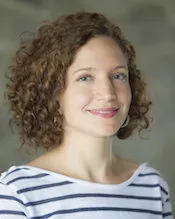Interdisciplinary Study Examines Federal Reserve Thinking Prior to 2008 Financial Crisis

Assistant Professor of Political Science Ayse Kaya
Six years after the start of the Great Recession, a new study from three Swarthmore College professors illustrates how the Federal Reserve was aware of troubling developments, but remained largely unconcerned.
The study, which was originally published online in the July 2014 Review of International Political Economy, is the result of an interdisciplinary collaboration between economist Stephen Golub, political scientist Ayse Kaya, and sociologist Michael Reay.
To reach its conclusion, the team examined a range of pre-crisis Federal Reserve documents with a particular focus on the transcripts of the meetings of the Federal Open Market Committee (FOMC).
According to Kaya, the idea for the study originated from Golub, who was interested in starting a project on the Federal Reserve and thought an interdisciplinary angle would be useful.
“Steve and I had met frequently to discuss the intersection of politics and economics, and he had read my work on multilateral economic institutions and knew of my interest in institutional design,” says Kaya. “Similarly, Steve and Mike had been in frequent discussion, as Mike analyzes how economists think from a sociological perspective.”
The team worked for over a year on the study, drawing on literatures in economics, political science, and sociology. Their findings demonstrate that the Federal Reserve’s intellectual paradigm in the years before the crisis focused on ‘post hoc interventionism’ – the institution's ability to limit the fallout should a problem arise. Additionally, they argue the literatures in political science and sociology on institutional dysfunctions illuminate the Fed’s lack of concern in the pre-crisis period, citing the example of the scripted nature of FOMC meetings.
Kaya explains that they “found that some of the conventional explanations did not hold up against the evidence; for instance, we found that free market ideology and regulatory capture by the financial sector did not provide adequate explanations for the Fed’s pre-crisis thinking.”
According to Kaya, the study benefitted greatly from its interdisciplinary approach.
“Each discipline, in a way, provides a set of lenses and languages for analyzing the world,” says Kaya. “Being able to force each other to think in other languages allowed us to have a more thorough understanding of the pre-crisis thinking at the Federal Reserve. We brought our own specialties to the table, but the whole ended up being greater than the sum of its parts.”
The study also benefitted greatly from the College's Aydelotte Foundation, which provided support and funding for student workers. The team hired two student assistants, Yuan Wang ’13, a political science and economics graduate from Bellaire, Tex., and Caleb Jones ’14, a political science and economics graduate from Palo Alto, Calif. The students helped with data collection, gathering Federal Reserve documentation, and “acted as sounding boards,” according to Kaya.
Kaya believes the study – which has already drawn the attention of many prominent economists and been republished by the popular economics blog VoxEu – offers some policy implications. “It isn’t enough to toughen regulation as the Dodd Frank law intends,” she says. “Institutional reforms may also be helpful, such as reorganizing meetings to create more space for dissent and dialogue and reducing the ‘silo’ mentality that appears to limit communication across different parts of the institution, particularly research, Supervision and Regulation, and the FOMC.”



